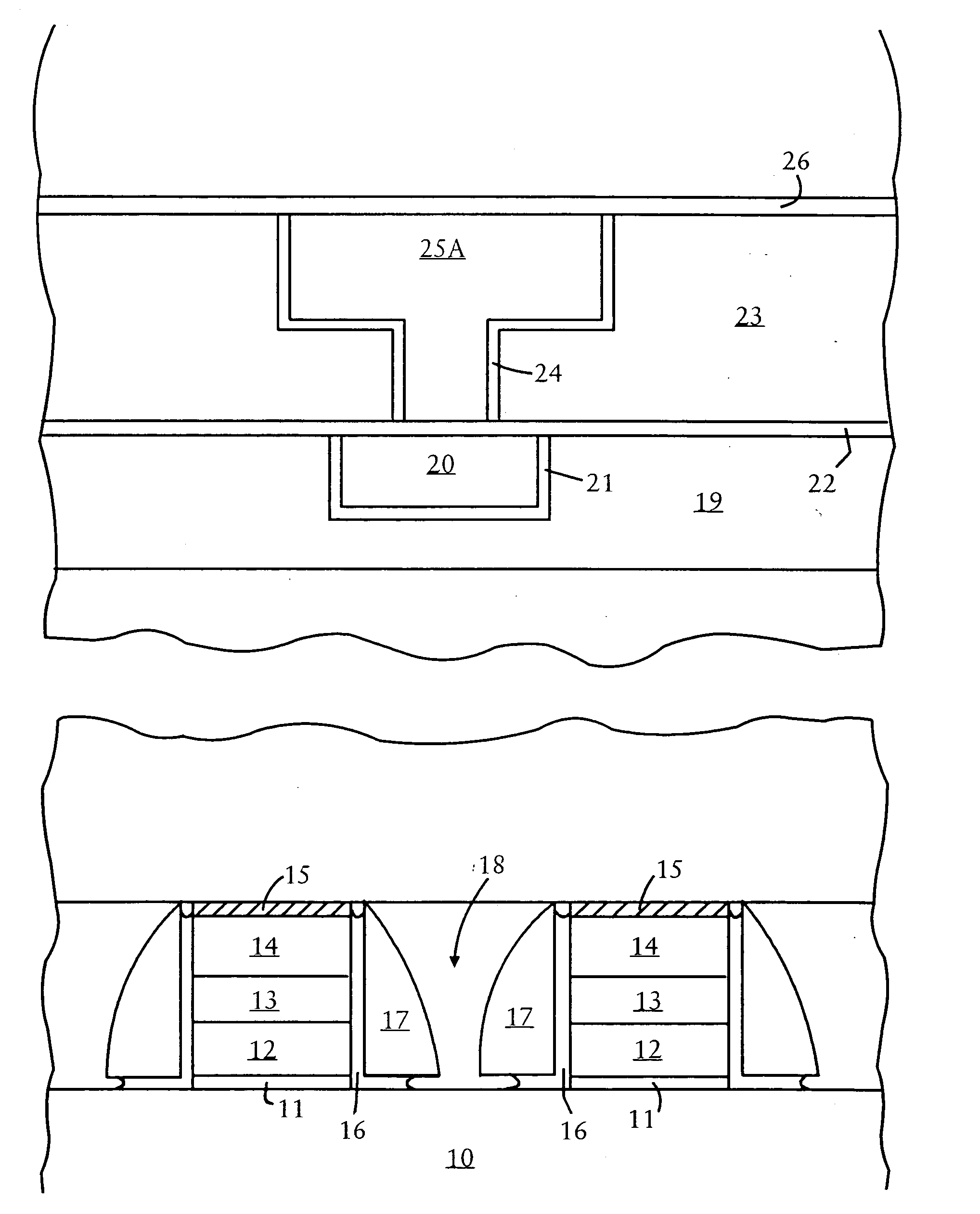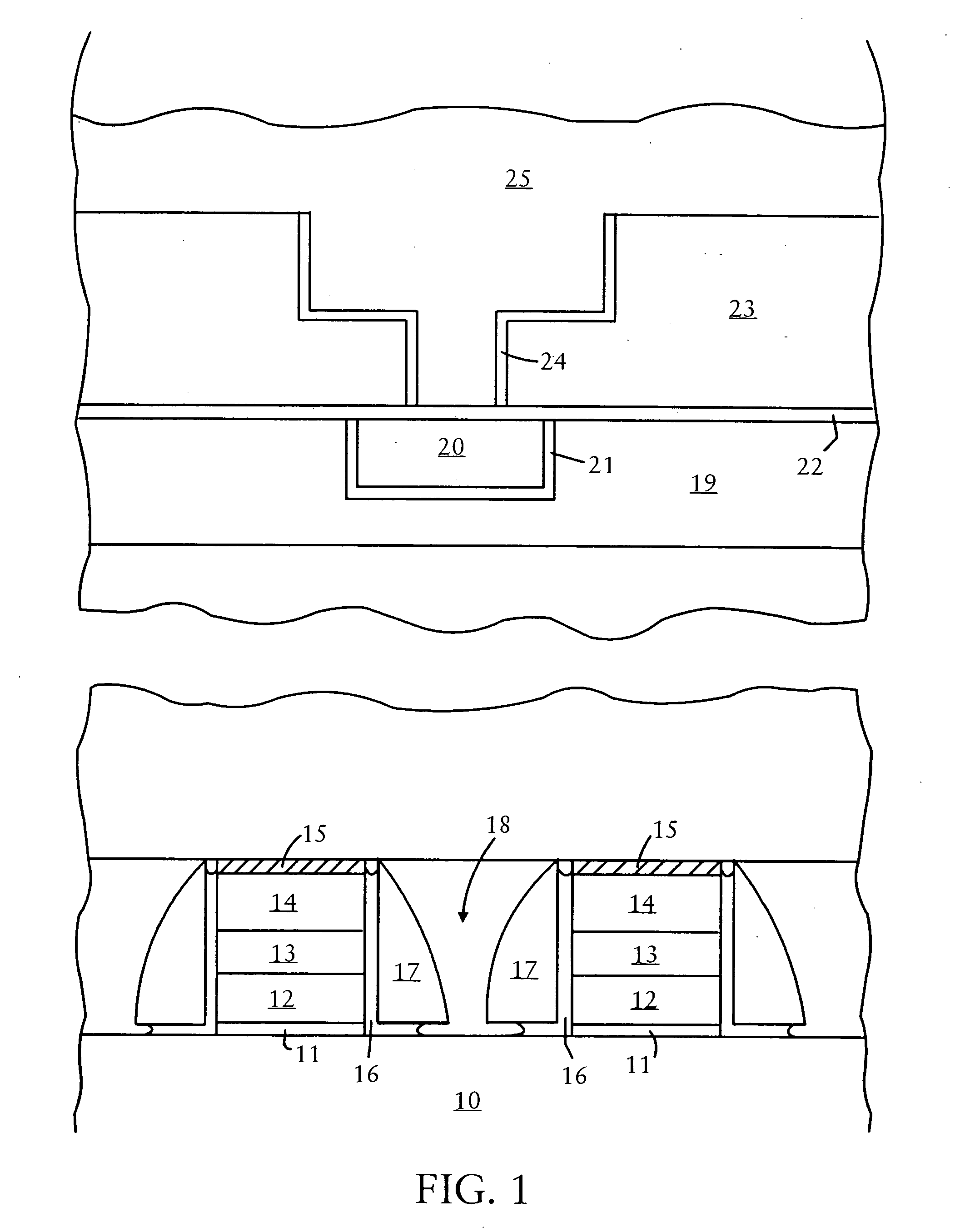Cu annealing for improved data retention in flash memory devices
a flash memory and data retention technology, applied in the field of manufacturing semiconductor memory devices, can solve the problems of increasing, programming loss, and affecting the retention rate of data, and achieve the effect of improving data retention
- Summary
- Abstract
- Description
- Claims
- Application Information
AI Technical Summary
Benefits of technology
Problems solved by technology
Method used
Image
Examples
Embodiment Construction
[0019]The present invention addresses and solves various reliability problems attendant upon conventional techniques for fabricating flash memory devices. These problems arise as semiconductor memory device dimensions continue to shrink, making it increasingly more difficult to effectively getter, reduce the generation of, and prevent the diffusion of mobile ion contaminants, such as hydrogen ions. The hydrogen ion contamination problem becomes exacerbated when integrating back end Cu interconnect technology with flash memory devices. During conventional back end processing, inlaid Cu is typically annealed in a forming gas atmosphere containing N2 and about 4 vol. % H2 at a temperature of about 250°. However, it was found that this process not only generated hydrogen ions but also accelerated the diffusion of hydrogen ions into the underlying devices, resulting in charge loss, adversely impacting data retention.
[0020]The present invention addresses and solves such data retention pro...
PUM
| Property | Measurement | Unit |
|---|---|---|
| temperature | aaaaa | aaaaa |
| temperature | aaaaa | aaaaa |
| temperature | aaaaa | aaaaa |
Abstract
Description
Claims
Application Information
 Login to View More
Login to View More - R&D
- Intellectual Property
- Life Sciences
- Materials
- Tech Scout
- Unparalleled Data Quality
- Higher Quality Content
- 60% Fewer Hallucinations
Browse by: Latest US Patents, China's latest patents, Technical Efficacy Thesaurus, Application Domain, Technology Topic, Popular Technical Reports.
© 2025 PatSnap. All rights reserved.Legal|Privacy policy|Modern Slavery Act Transparency Statement|Sitemap|About US| Contact US: help@patsnap.com



